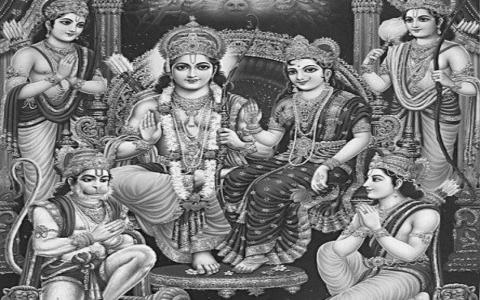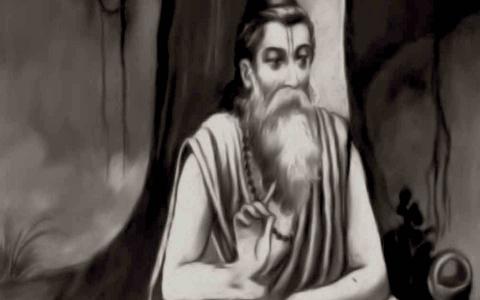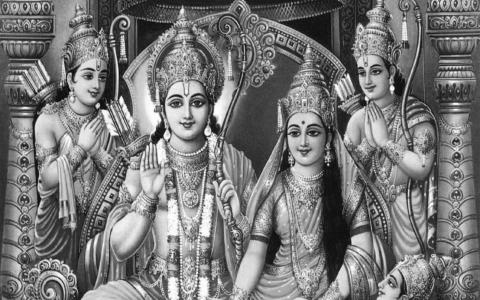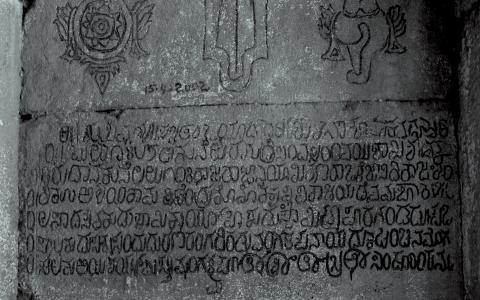September 2017
Terms of Use
I am aware that the information shared/given by me is maintained with utmost confidence and that the information so provided will not be disclosed to any person/authority except as required under any law/regulatory requirements.
However, I also understand and agree that, upon my express permission, the information provided by me may be disclosed to any person or authority at any given time.
I hereby confirm and covenant that...

When Dasharatha orders Rama’s banishment, he again rushes to his mother to give her solace. At that moment, Kausalya reminds Rama that the mother is a hundred times more important than the father, and that it is more important to heed to the words of the mother than the father. Saying so, she orders him to take her along with him into the forests. But if that happens, the family would break; husband and wife would separate. Rama doesn’t want his...

Nīlakaṇṭhavijayacampū
A Summary of the Story
Written in the campū style with a mixture of prose and poetry, this work is based on the mythological story of how the sage Durvāsas gifted a wreath of flowers to Indra, how Indra disrespectfully placed it on his elephant’s head, how the beast crushed the wreath beneath its feet, how the angry sage cursed Indra that he would lose his glory, how the gods, now weakened by the effect of the curse were...

Philosophy in the Mahābhārata : Sāṅkhya
A few things must be mentioned before entering into this discussion. As stated earlier, the extant Mahābhārata was composed in a span of about thousand years and different parts were added and modified at different points in time, thus making it extremely difficult to summarize the view of the epic on a given topic. Such an attempt might even lead to error; it is for this reason that most scholars felt the...

III
Similar to the unified theory of matter and energy, which modern science concerns itself with, we have a unified theory of rasa. The following is its mathematical representation:
R = (V×D)au OR R = V × an ʃ au D
(R = Rasa, V = Vakrokti, D = Dhvani, au = Aucitya, and an = Anaucitya)
[The equation is meant only as a mathematical dṛṣṭānta. It should not be interpreted literally.]
This is applicable to all visual, plastic, performing,...

नित्यौचित्यकरावलम्बरुचिरो वक्रोक्तिवर्तिस्तुतो
ध्वन्युद्दामशिखास्फुटोऽक्षयरसस्नेहस्समुद्द्योतयन्।
धन्यानां सहृदां हृदि प्रतिपदं काव्यार्थमात्मोपमं
वाणीप्राणसमीरणो विजयते विद्याप्रदीपः कवेः॥
I
Indian Aesthetics, mostly codified in Sanskrit, is a fine representative of original thoughts on Art Experience. Every province of India, through the brilliant brains of its soil, has contributed to this field. It is a misrepresentation, to say the least,...

When we discussed about Shiva, a lot of symbols were invoked. Instead of taking Shiva’s form and attributes at face value, we explored the metaphor. The reason for this is quite simple: human beings are abstract. They are so hard to grasp. It is so difficult to wholly understand an individual. But societies are more tangible – or at least we feel that we can see it better, in a more concrete manner.
In our tradition, Shiva has no avatāra. Vishnu...

Sarga 6
The sixth Sarga describes Bhagīratha's efforts at procuring Gaṅgā from Śiva through penance and praise. Trickling from ¾iva’s dreadlocks, the river, now subdued, follows Bhagīratha. On her way, Gaṅgā engulfs the hermitage of Jahnu, is drunk up by him and then released through his ear. She then reaches the holy city of Kāśi –
आमन्त्र्य मूर्ध्ना प्रणतेन शम्भुमारुह्य च स्यन्दनमग्रतस्तम् ।
संप्रस्थितं पार्थिवमन्वयासीत्स्रोतः पयं...

Half of the extant Mahābhārata is dedicated to dharma and ethics. In the other half, the main story and the upākhyānas are present. Even if we consider the latter alone, without doubt, it qualifies for a matchless poem. “कृतं मयेदं भगवन् काव्यं परमपूजितम्” (I have composed a sublime poem, O revered one!) says Vyāsa to Brahma. It is indeed poetry; doubtless it is sublime poetry; it has uniqueness in content, variety of characters, richness in...

This is a translation of the author’s original Kannada essay titled “ಭಾಷಾಬೋಧಕಗಳ ನೆಲೆ-ಬೆಲೆಗಳು” published in his work, Bhashabhrungada Benneri.
Translated by Sandeep Balakrishna.
I had averred earlier that one of the tragedies of today is the fact of not prescribing evocative literature at the level of primary school instruction.
It’s not necessary to spell out to the learned what is meant by evocative literature. But for the purposes of easy...
